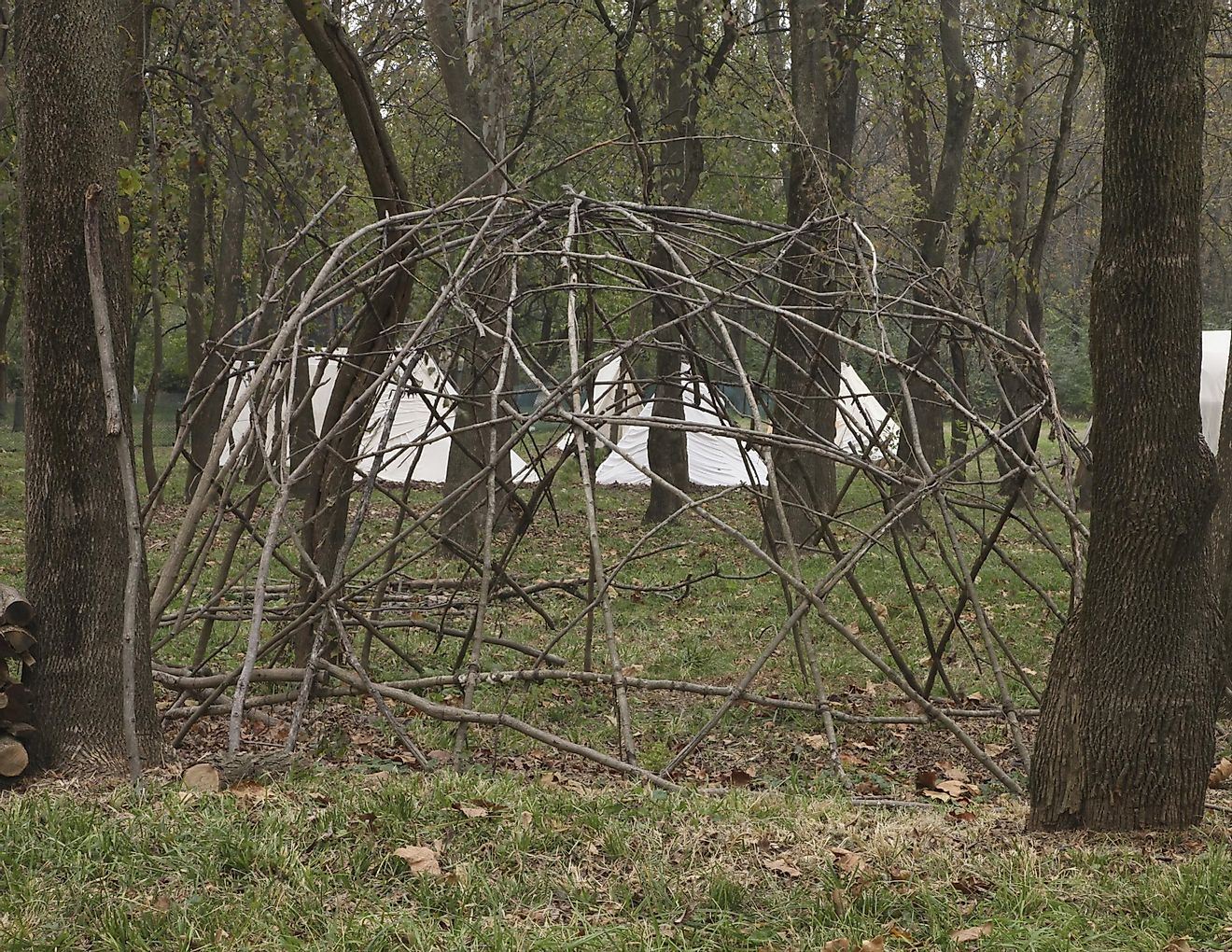The Chemehuevi - Native Peoples of North America

5. Description
The Chemehuevi are an aboriginal people who originated as one of the Southern Paiute tribes. The Chemehuevi traditionally lived in the Mojave Desert in the Great Basin, as well as along the shorelines of the Colorado River. Their people's name means “those that play with fish” when translated to Mojave, although in the Quechan language it means “nose in the air like a roadrunner”. The people themselves, however, refer to themselves as the "Nüwüwü" or the "Tantáwats", which translates to “Southern Men”. The Chemehuevi language was first put on paper and studied extensively in the early 20th history by Carobeth Laird and John Harrington. At present, most Chemehuevi people speak English, and only very few members of their population know how to use their ancestors’ language.
4. Architecture
The Chemehuevi used to live in small cone- or round-shaped houses called "wickiups". These structures were typically constructed using willows, dirt, and brush, and are quite easy to build, even for people who are always moving. This type of dwelling suited the nomadic lifestyle of the Chemehuevi very well, as they rarely stayed in one place for very long and were able to make new wickiups using materials readily found in each of their new environments. Today, these people now live in modern houses and apartment buildings, and only use the wickiups to keep their traditions alive, or for ceremonial rites and other special occasions.
3. Cuisine
The original Chemehuevi were efficient hunter-gatherers who migrated from one place to another in search of more abundant food sources for themselves and their families. The men carried out all of the hunting and trapping of rabbits, bison, wild pigs, deer, squirrels, and other small animals. These were either roasted, boiled, or dried by the women, and were supplemented by beans, corn, root crops, fruits, nuts, and all manner of edible seeds. Later on, as tribes increasingly opted to set up more permanent dwellings along the shorelines of Colorado River, they eventually took up fishing and agriculture as their means of livelihood.
2. Cultural Significance
According to the information collected by linguistic ethnographer Carobeth Laird and her husband, the Chemehuevi were a quiet and peace-loving people capable of having fun whenever the situation called for it. They are a proud tribe who are well in tune with nature. They are conservative, yet able to adapt to change in order to ensure their survival. Laird noted that they were not afraid of new ideas, were willing to learn new languages, and even married the wives of outsiders whenever it suited them. Chemehuevi artists are well known for their intricately woven baskets, as well as expertly crafted pottery and colorful beaded jewelry. They are engaging storytellers, and much of their past culture is reflected in their myths, songs, folklores, and legends.
1. Threats
The Chemehuevi people are considered to be an endangered people in North America, as their culture and traditions have perpetually been threatened by modernization, war, removal, disease, and depression ever since European contact. The Cultural Committee of the Twenty-Nine Palms Band of Chemehuevi has taken great strides in keeping in touch what makes their tribe unique by recovering and preserving whatever artifacts they can find. They also work to keep sacred the landscapes, villages, and caves where their ancestors had lived. The Chemehuevi language is almost completely wiped out, something that the Siwavaats Junior College in California is working to reverse. The school teaches young children to speak the language, and aims to produce a 2,500 word Chemehuevi dictionary by the end of 2016.











